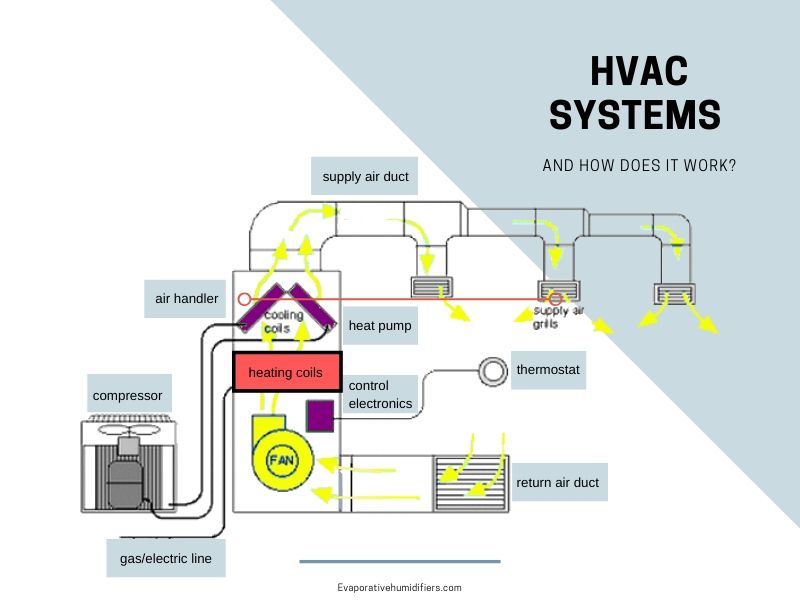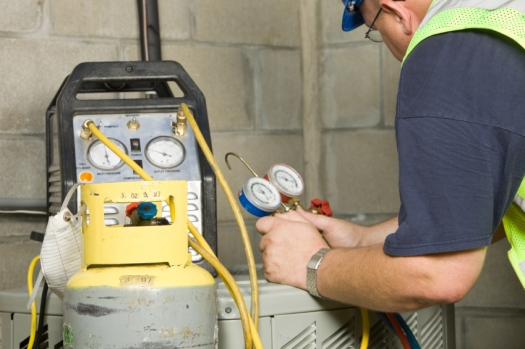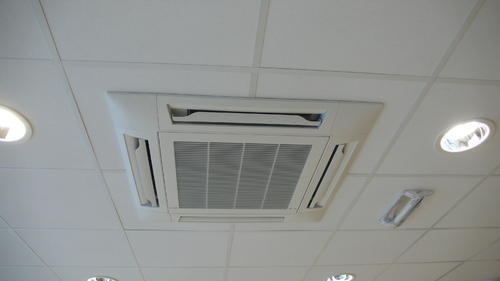A big part of your monthly electricity bill is because of your air conditioning system. So, you must make sure that it is running efficiently. It could even result in a massive expenditure if not taken care of. People are usually confused about what should be the Temperature of air coming out of the vent. There are some ideal temperatures that the company does not tell people. Let us dive into it.
HVAC System
HVAC stands for heating, ventilation, and air conditioning. It is a system that controls the environment around it. It uses fresh outdoor air and provides high-quality indoor air. It is usually found in households or commercial buildings. It also controls the humidity indoor by controlling the movement of air inside the room. It replenishes oxygen, removes dust, smoke, airborne bacteria, etc. from the room.
As soon as you switch your air conditioner on and it works correctly, hot air from the room is sucked by the system through the HVAC system from the evaporator coil. Here, a volume of heat is removed from the warm air, and cold air is supplied through the air ducts to our rooms. This involves the science of evaporative cooling.
How Does the HVAC System Work?

The HVAC system is one of the most critical and complex processes running inside your room. It has three main functions: heating, ventilation, and air conditioning. It is composed of nine parts, namely – air return, exhaust, filter, ducts, outlets, coils, blower, compressor, outdoor unit, and electrical elements.
The air return sucks in the hot air, which is drawn through the home HVAC filters. The exhaust created by the heating system is expelled through an exhaust outlet and passes through ducts. The fan, which facilitates the airflow, is situated inside the outdoor unit. The convertor converts refrigerant into the liquid from gas and sends it to coils, which cool the air that passes through it.
Remember that air conditioning is a part of the HVAC system. It is the last thing that the system does. However, the terms are used interchangeably.
First Things First: Your Room Should Be In Ideal Conditions
HVACs are required to operate in well-insulated rooms. In some cases, homeowners fail to insulate their home, then blame their HVAC unit for its inability to cool the room. Hot air can easily enter a poorly insulated room. The hot air may come from the surroundings or even the HVAC vents itself. To ensure high-quality room insulation, seek professional such as Building Insulation Solutions and other contractors in your area.
Aside from insulating your room itself, you shouldn’t neglect ductwork insulation as it also helps in conserving energy. As air travels through your duct system, the insulation will ensure that it’ll maintain ideal air temperature and won’t leak out. Thanks to proper ductwork insulation, you can save around 10% to 30% of energy for heating and cooling your home.
What Should be the Temperature of Air that you Should Expect to Blow Out?
It is subjective. But it should ideally be 14 to 20 degrees cooler than the intake temperature. For example, the Temperature of your room is 70 degrees. The Temperature of air that blows out from your AC should be somewhere between 44 to 50 degrees.
What Temperature Should You Set on your Thermostat?
It is again subjective like ‘what should be the temperature of air coming out of the vent?’. It depends upon your comfort. Generally, houses can maintain a temperature between 70 to 75 degrees. So, you can set the Temperature to around 50 degrees. Keep in mind that the lower your thermostat temperature, the higher the electricity bill!
There are ‘smart’ thermostats in the market these days. They allow you to set a thermostat temperature in the form of a daily program so that while you are away, your home temperature can be raised. It will be lowered as soon as you reach home. This prevents health issues that can raise due to higher indoor humidity levels.
If you live in hotter regions, there is another more important thing that you need to keep in mind. Most of the air conditioners are designed for an outdoor temperature of 95 degrees. If the Temperature is more than that, you might see your thermostat rise. That does not mean your system is wrong. It merely means that your system is not designed to remove that much heat.
Moreover, the US Department of Energy recommends keeping your thermostat up as high as possible, ideally at 78 degrees Fahrenheit, to increase the difference between indoor and outdoor temperatures. If you want to maximize your HVAC use while saving as much energy as you can, you might want to consider upgrading to a smart thermostat. This type of thermostat can analyze the pattern of your temperature settings, then develop its own algorithm to help you save energy.
How Can you Test HVAC Temperature at Home?

You can quickly test your HVAC system yourself. All you need is a household thermometer and masking tape. Make sure that the day you decide to record this, the Temperature outside your house is at least more than 80 degrees Fahrenheit. Allow the air conditioner to run for 10 to 15 minutes.
Keep the thermometer on a vent and leave it there for some time. Note down the Temperature. Does it with a return vent again? Subtract both the temperatures. The difference should at least be 14 to 20 degrees. Move this thermometer to all the vents in your home and record the Temperature. If they are colder or warmer than the other, the distance may be too much, or there may be a problem with the ducts.
Similarly, you can test your heater during winters. You can also use the masking tape to place the thermometer if vents are on the wall or ceiling. To differentiate between vents are returns, place your hand in front of a vent to see if it is blowing out cold air. If it is not, it is a return.
Your filters need to be clean before you record the Temperature. If it is dirty, the unit operates inefficiently. It also means a HUGE electricity bill.
Problem Not Corrected Even after Air Conditioning Service?
A general air conditioner has two separate systems; one to provide a means to cool the air and the other to move the house air through the cooler. Most of the time? The air conditioning service checks the operation of the refrigerant system.
They check the freon pressure and add some freon if required. They declare that it is working correctly and hand due a bill. This technically means that they checked the refrigerant position of the system. They do not check the blower.
You should consider a few points before calling the air conditioning service- The drain from the cooling point can be plucked up if the house feels cold but uncomfortable. Normally? The moisture in the house condenses in the cooling coil and drains outside the house. The dust and the other impure particles that pass through your air conditioning filter collects on the cooling coil. If you do not use your air conditioner for a long time, the dust dries into flakes. This stuff sometimes blocks the small drain line and water that backs up in the cooling coil, so dry air feels cooler than moist air.
A duct supply hose can become loose if your air conditioner does not cool. If from all around the house if usually blown into the attic, which results in lowering the air pressure of the house. This means too high electric bills.
To conclude, sometimes a poorly operating air conditioning system can be the result of a flawed delivery system, and your refrigerant system may work fine most of the repairmen only check the refrigerant part of their system. Tracing air leakage through ducts can be a comparatively, more challenging job.
The efficiency of your air conditioning system does not only depend upon the HVAC system. It also depends upon how well the house is dissociated and other factors like shade trees. There can be environmental issues as well as excessive direct sunlight from windows or wall exposer, inadequate ventilation or insulation, the hotter Temperature outside the house, etc.
A 20 to 22-degree difference in the Temperature outside and inside your house indicates that your air conditioner is not operating efficiently. If you find some air leaks in the supply, duck get some duct ceiling paste and put in over the air leaks. You can use this paste in other leaking supply lines later.
If your house has a lot of windows or large windows, your air conditioning unit will face more difficulty in pulling down the Temperature. You can place plants in front of the window to stop sunlight from coming in. If your windows do not seal completely when they are closed, they allow hot, humid air to enter the room, which affects the effectiveness of the air conditioner. Make sure you close the windows and doors properly before turning it on. The issue may be as trivial as dust or dirt on your air conditioner’s vent. Read this customer’s review:
“We had less than a 10-degree difference last summer. Our HVAC man took the garden house to the outdoor unit and cleaned out the dust/dirt. The temperature difference jumped to 17 degrees in less than 5 minutes. Check YouTube for videos on how to do this.”

